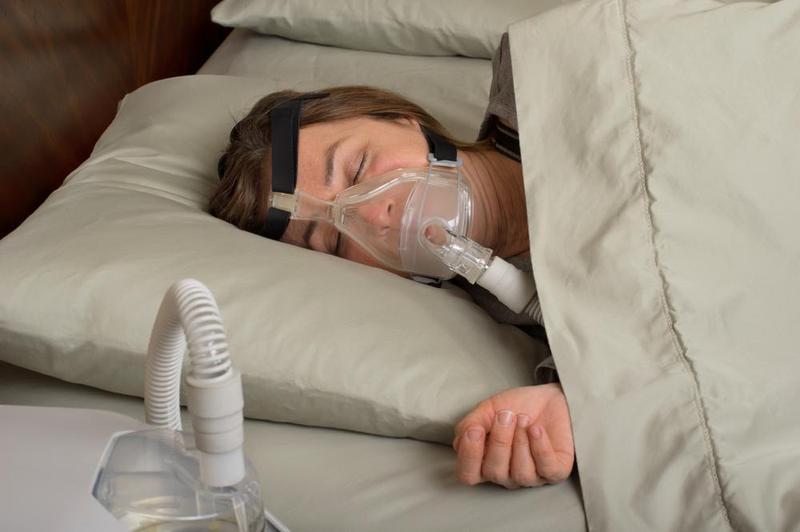Sleep Apnea – You May Not Know You Have It. Take This Test To Find Out.
Sleep Apnea – You May Not Know You Have It. Take This Test To Find Out.
Sleep apnea is a sleep disorder when a person stops breathing multiple times during the night. It can potentially lead to serious consequences such as insomnia, hypersomnia, or recurring morning headaches. Interestingly, most people with sleep apnea have no idea they suffer from it.
According to statistics collected in 2002, more than 100 million people globally suffer from sleep apnea. 1 in 12 people suffer from obstructive sleep apnea (OSA) which happens as the muscles in the back of the throat relax and the airway narrows or fully closes. When that happens, not enough oxygen is inhaled leading to repeated snorts, chokes or gasps and possibly up to thirty times an hour. As a result, the sleep cycle is interrupted, and you are unable to enter into the deeper phase of sleep.
Less common is central sleep apnea, a disorder caused by the brain failing to transmit signals to the breathing muscles. The sufferer doesn’t make any efforts to breathe several times a night which can often cause insomnia.
A study conducted at Johns Hopkins University shows that 75-80% of sleep apnea cases remain unidentified. Check out these sleep apnea symptoms and then take a test to make sure you are not suffering from it.
Symptoms of Sleep Apnea
• Snoring louder or as loud as talking
• Not breathing continuously at night (will be reported by someone else as you wouldn’t notice it)
• Snorting, choking or gasping for air during sleep
• Morning fatigue and headaches
• Insomnia
• Hypersomnia
• Inability to focus during the day
• Being irritable
If some of these sleep apnea signs are familiar to you, take this sleep apnea test. Answer yes or no to each of the questions below.
1. Do you snore loudly and/or regularly?
2. Has someone ever noticed you gasping for air or not breathing in your sleep?
3. When you wake up, do you feel tired or have a headache?
4. Are you often fatigued?
5. Do you often fall asleep not in bed (watching TV, reading, sitting, etc.)?
6. Do you find it hard to concentrate or remember things?
If you answered positively to one or more of these questions, you are at risk for having sleep apnea. Why might that be?
There are factors that increase chances of having sleep apnea. Here are the most common sleep apnea causes:
• Being overweight (excessive weight inhibits proper breathing)
• Having a thicker neck (usually means having narrower airways)
• Having a narrow airway (a very narrow throat or increased tonsil size blocks the airway)
• Being male and/or being older (statistically, sleep apnea is more common in men and older people)
• Smoking, drinking alcohol or taking sedatives
So, what are your treatment options if you have sleep apnea? Read on to find out!
Sleep Apnea Treatment
The most common treatment for sleep apnea is the Continuous Positive Airway Pressure (CPAP) device, or sleep apnea machine. The CPAP looks like a mask that you wear when you’re about to sleep. Through a constant flow of air, the device naturally keeps your airways open. Apart from a standard CPAP machines, there are also travel CPAP devices that are more compact in size for easier transport.
There are many accessories that will ensure your comfort and treatment’s effectiveness. To improve the stability of your mask while you change positions in your sleep, try using the hose holder. To make your sleep comfortable with a mask, try this pillow specially designed for CPAP. It supports your neck and doesn’t allow the mask to move while in different sleep positions. There is also a bedside organizer to keep your mask and tubing clean, store both external lithium batteries and cleaning wipes.
If for some reason a sleep apnea machine doesn’t suit you, try the oral splint that keeps your jaw a little bit forward for better airflow. To start using the oral splint during sleep, please consult your dentist.
Another way of treatment is by using sleep apnea masks: nasal pillows, nasal masks or full-face masks. Nasal masks create a seal with the tips of your nostrils. These are smaller than nasal masks that only cover your nose. Full-face masks cover both nose and mouth.
Another treatment for sleep apnea is to address your sleep position and namely when you sleep on your back. If that is your case, try the positional belt that prevents this sleeping position which can lead to alleviated effect of apnea.
Sometimes, sleep apnea can be treated by making lifestyle changes.
Lifestyle with Sleep Apnea
• If you are overweight, lose the excess pounds. When you come back to your healthy weight, sleep apnea might disappear completely and naturally.
• Exercising even without losing weight is also good for sleep apnea. Even a brisk walk thirty minutes a day can be enough.
• Avoid alcohol, sedatives and tranquilizers as they numb and relax your throat leading to blockage of the airways.
• Sleep on your side and not on your back.
• Quit smoking.
Being a common sleeping disorder, sleep apnea remains widely unidentified while causing sleep deprivation, fatigue and a variety of subsequent ailments. If you suspect having sleep apnea, immediately consult your doctor to choose a treatment. You will see your life change for the better as soon as you get your sleep cycle in order.
Be the first to post a message!
